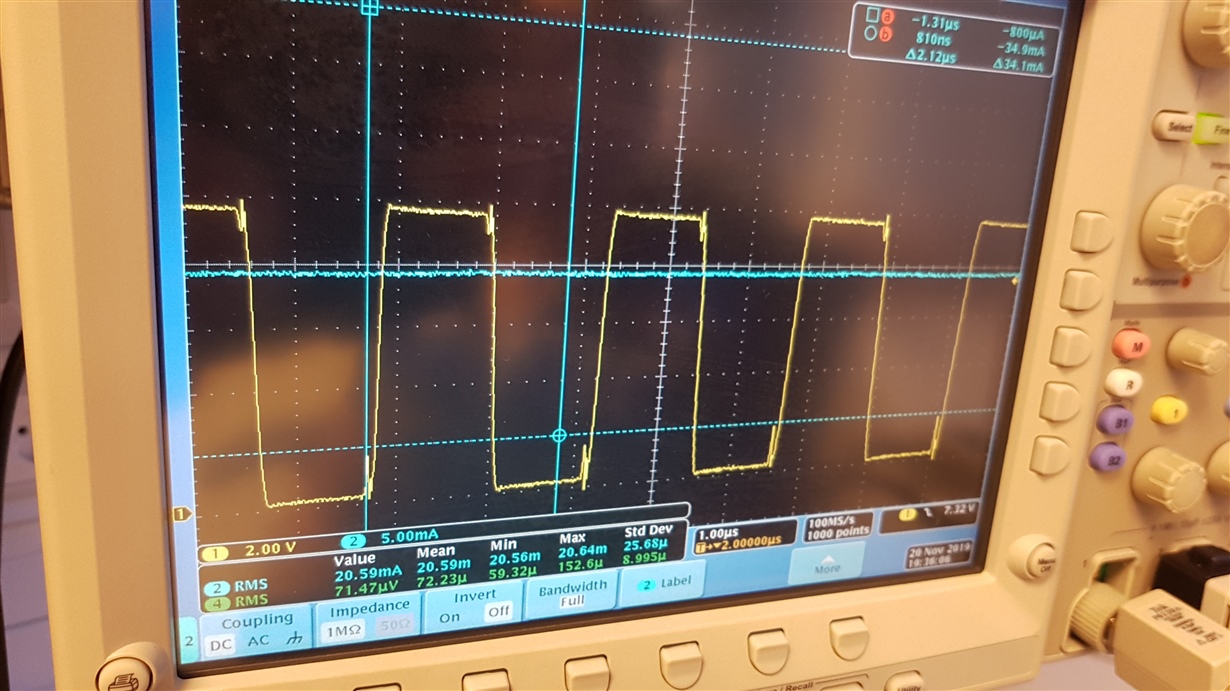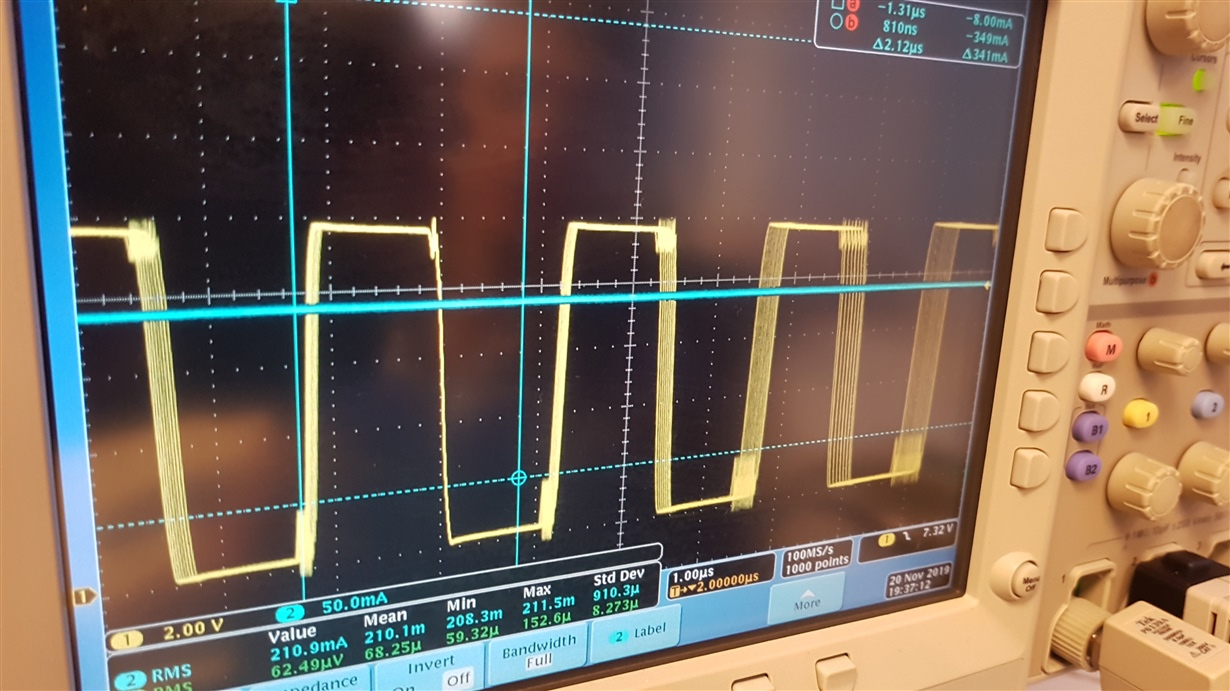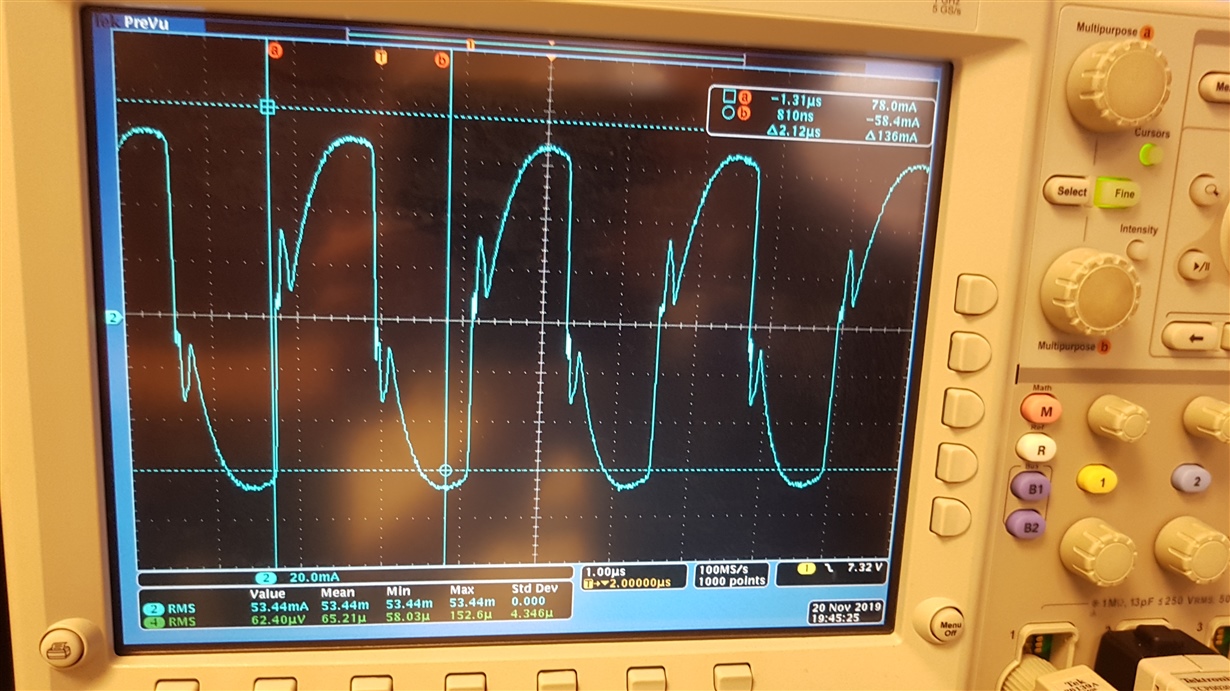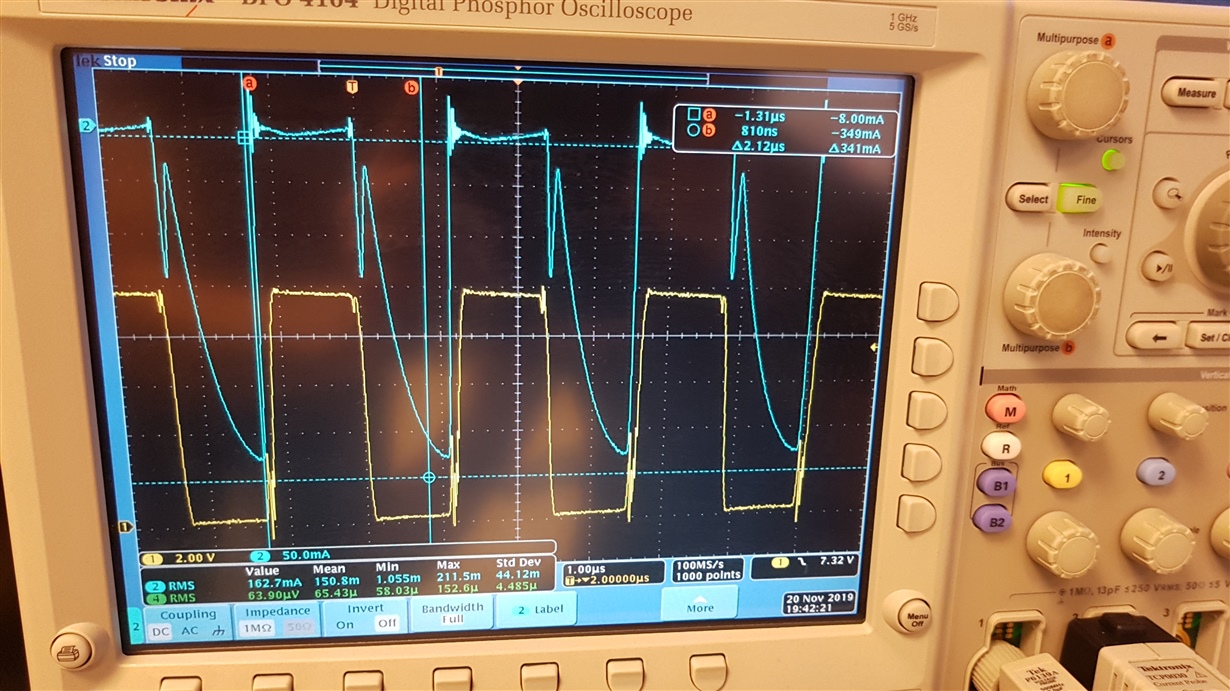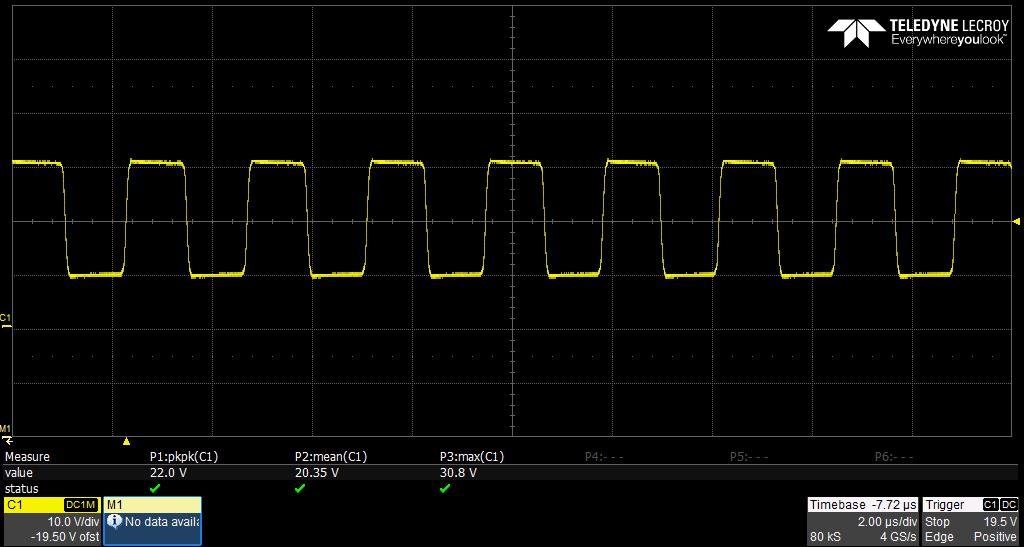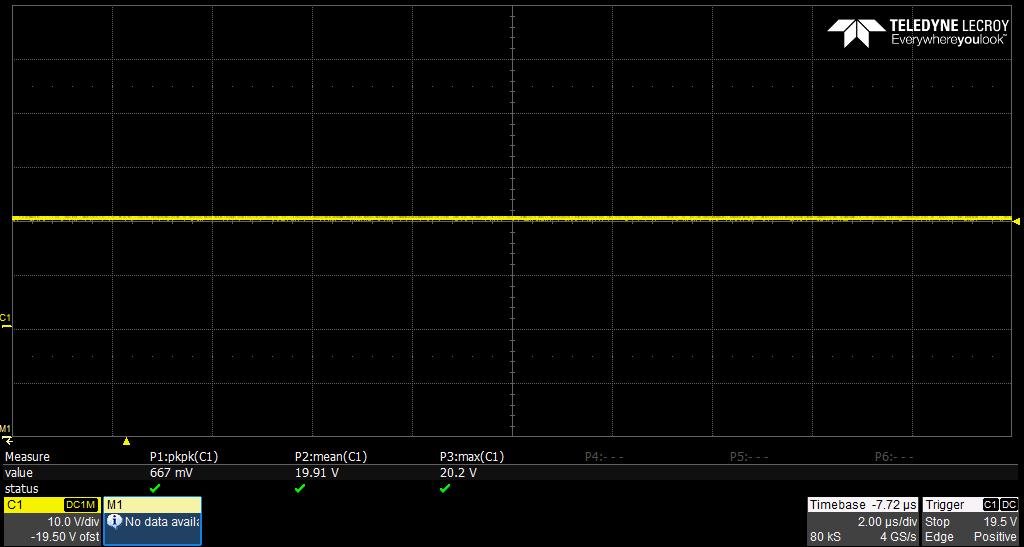Other Parts Discussed in Thread: SN6501, SN6505A
Hi,
We are in the need of an isolated power supply of around 40V capable of supplying around 5 to 10 mA (we need to supply just one IC high voltage power input). We do not need a regulated power supply as we have some voltage headroom on the isolated power side. We decided to use SN6505A-Q1 with 5V input, 1:2 transformer (WE 750316032: https://katalog.we-online.de/ctm/datasheet/750316032.pdf) and the "Half-Wave Rectifier Without Centered Ground and Center-Tapped Secondary" configuration described in the datasheet as Figure 50. However, when we contacted the transformer manufacturer, they said that this configuration is beyond the specification of the transformer and the SN6505 IC. Nevertheless, we assembled a prototype and it seems to work without a problem (the temp rise is some degrees and the voltage drop is within the specified limits in the datasheet, D1 and D2 experience a maximum voltage spike of 12.5 V according to oscilloscope graph). That being said, we would like to get some insight why such configuration should not be used (at least from the IC side) or what are the potential failures when using it. I have attached the schematic of our design as well as the example from the datasheet.


